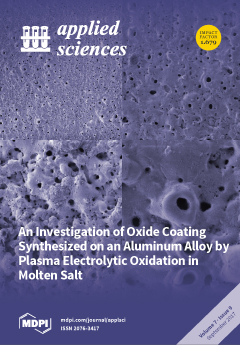To improve the interfacial stability at high temperatures,
n-type skutterudite (SKD) thermoelectric joints with sandwich structures of Ti/Mo/Yb
0.3Co
4Sb
12 were successfully designed and fabricated. In this structure, Mo and Ti were introduced as the barrier layer with the
[...] Read more.
To improve the interfacial stability at high temperatures,
n-type skutterudite (SKD) thermoelectric joints with sandwich structures of Ti/Mo/Yb
0.3Co
4Sb
12 were successfully designed and fabricated. In this structure, Mo and Ti were introduced as the barrier layer with the goal of suppressing the interfacial diffusion and the buffer layer with the goal of enhancing the bonding strength, respectively. To evaluate the high temperature interfacial behavior of the Ti/Mo/Yb
0.3Co
4Sb
12 joints, thermal shocking between 0 °C and 600 °C and isothermal aging at a temperature range of 550 °C to 650 °C were carried out in vacuum. During the isothermal aging process, Ti penetrates across the Mo layer, and finally diffuses into the Yb
0.3Co
4Sb
12 matrix. By increasing the isothermal aging time, Ti continuously diffuses and reacts with the elements of Sb and Co in the matrix, consequently forming the multilayer-structured intermetallic compounds of Ti
3Sb/Ti
2Sb/TiCoSb. Diffusion kinetics was investigated and it was found that the interfacial evolution of the Ti/Mo/Yb
0.3Co
4Sb
12 joints was a diffusion-controlling process. During the diffusion process, the formed Mo-Ti buffer layer acts as a damper, which greatly decelerates the diffusion of Ti towards the Yb
0.3Co
4Sb
12 matrix at high temperatures. Meanwhile, it was found that the increase in the contact resistivity of the joints mainly derives from the inter-diffusion between Ti and Yb
0.3Co4Sb
12. As a result, the Ti/Mo/Yb
0.3Co
4Sb
12 joint demonstrates the excellent stability of the interfacial contact resistivity. Service life prediction was made based on the stability of the contact resistivity, and it was found that the Ti/Mo/Yb
0.3Co
4Sb
12 joint is qualified for practical applications at 550 °C.
Full article





